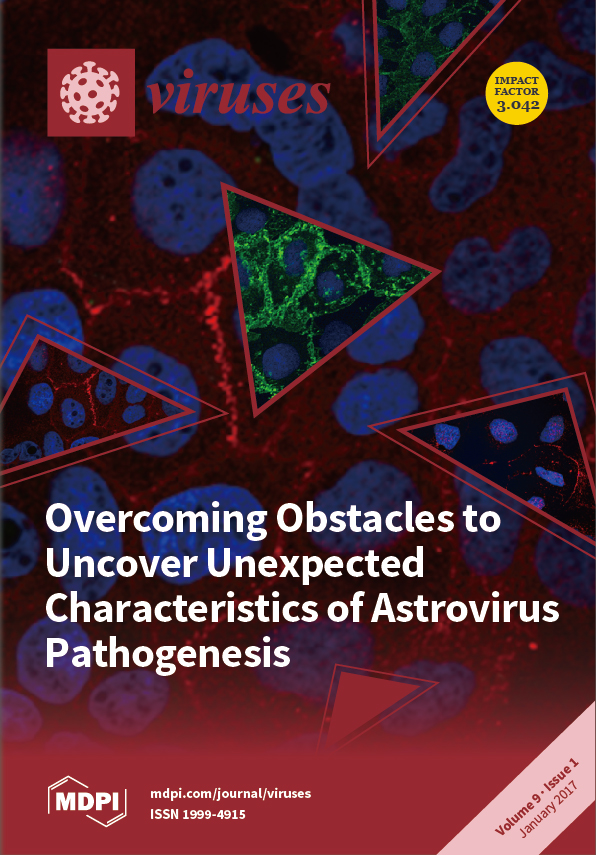Open AccessReview
Promoter Motifs in NCLDVs: An Evolutionary Perspective
by
Graziele Pereira Oliveira, Ana Cláudia dos Santos Pereira Andrade, Rodrigo Araújo Lima Rodrigues, Thalita Souza Arantes, Paulo Victor Miranda Boratto, Ludmila Karen dos Santos Silva, Fábio Pio Dornas, Giliane De Souza Trindade, Betânia Paiva Drumond, Bernard La Scola, Erna Geessien Kroon and Jônatas Santos Abrahão
Cited by 18 | Viewed by 9975
Abstract
For many years, gene expression in the three cellular domains has been studied in an attempt to discover sequences associated with the regulation of the transcription process. Some specific transcriptional features were described in viruses, although few studies have been devoted to understanding
[...] Read more.
For many years, gene expression in the three cellular domains has been studied in an attempt to discover sequences associated with the regulation of the transcription process. Some specific transcriptional features were described in viruses, although few studies have been devoted to understanding the evolutionary aspects related to the spread of promoter motifs through related viral families. The discovery of giant viruses and the proposition of the new viral order Megavirales that comprise a monophyletic group, named nucleo-cytoplasmic large DNA viruses (NCLDV), raised new questions in the field. Some putative promoter sequences have already been described for some NCLDV members, bringing new insights into the evolutionary history of these complex microorganisms. In this review, we summarize the main aspects of the transcription regulation process in the three domains of life, followed by a systematic description of what is currently known about promoter regions in several NCLDVs. We also discuss how the analysis of the promoter sequences could bring new ideas about the giant viruses’ evolution. Finally, considering a possible common ancestor for the NCLDV group, we discussed possible promoters’ evolutionary scenarios and propose the term “MEGA-box” to designate an ancestor promoter motif (‘TATATAAAATTGA’) that could be evolved gradually by nucleotides’ gain and loss and point mutations.
Full article
►▼
Show Figures






